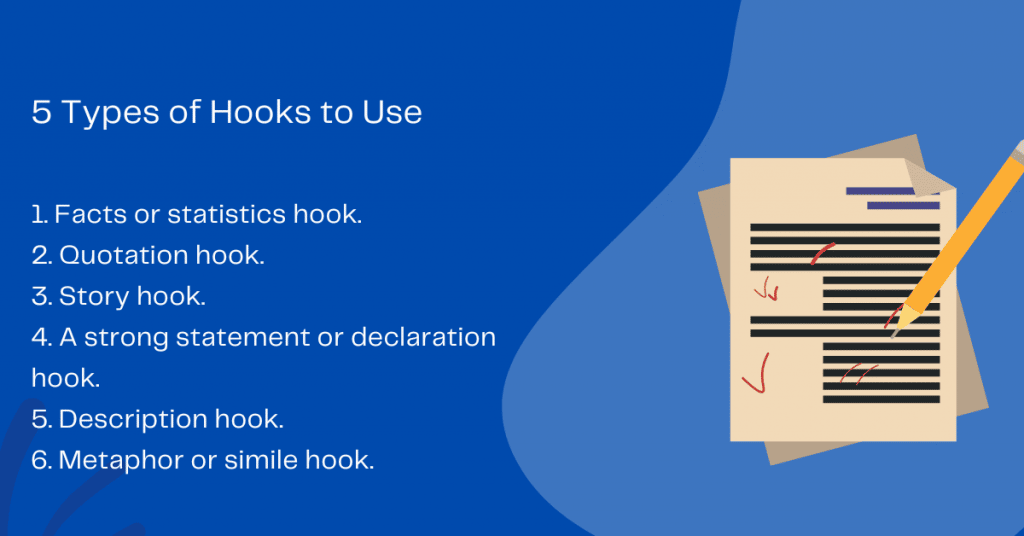Have you been assigned an argumentative essay and are unsure where to start? Starting an argumentative essay can seem daunting for a college student, but it can be a straightforward and rewarding process with careful planning and consideration. An argumentative essay is a type of essay where you present a clear and concise argument on a particular topic and persuade your reader to adopt your point of view.
The key to starting an effective argumentative piece of writing is to follow simple steps, such as choosing a topic, developing a thesis statement, researching and gathering strong evidence, outlining your essay, and crafting a compelling introduction and conclusion. In this article, we will take you through each step of starting an argumentative essay and provide tips and tricks to help you create a persuasive and well-organized argumentative essay. Following these steps, you can confidently start your argumentative academic essay and make a strong case for your position. Consider our argumentative essay writing service if you are still struggling after reading this guide.
Steps on how to start an argumentative essay
Here’s how to start your argumentative essay
Choose a topic
When starting an argumentative essay, the first step is to choose a topic. Ideally, you should choose a topic you are passionate about and have a strong opinion on. However, it is also important to consider your audience and choose a topic that interests them.
Once you have a general topic, you must narrow your focus. This means identifying a specific aspect of the topic you want to explore in your essay. For example, if you want to write about climate change, you might focus on human activity’s environmental impact.
Identifying key arguments and counterarguments related to your topic is also important. This will help you to anticipate objections to your position and develop a stronger argument.
Ultimately, the goal of choosing a topic is to identify an issue that is both relevant and interesting and that will allow you to make a compelling argument. Take the time to research different argumentative essay topics and explore different angles until you find one that feels like the right fit for you.
Develop a thesis statement.
After choosing a topic for your argumentative essay, the next step is to develop a clear and concise thesis statement. Your thesis statement should clearly state your position on the topic and preview the main arguments you will use to support your position.
To develop a strong thesis statement, consider the following:
- Make sure your thesis statement is debatable: Your thesis should not be a simple statement of fact. It should be a statement that can be argued and has opposing viewpoints.
- Take a clear position: Your thesis statement should make your position on the topic clear. Avoid vague or ambivalent language.
- Preview your main arguments: Your thesis statement should preview the main arguments you will use to support your position. This will help guide the organization of your essay.
For example, if you are writing an argumentative essay on the topic of gun control, your thesis statement might look something like this:
“Stricter gun control laws are necessary to reduce gun violence in the United States. By implementing universal background checks, limiting access to assault weapons, and increasing funding for mental health programs, we can make our communities safer and prevent senseless tragedies.”
In this thesis statement, the writer takes a clear position on gun control and previews the main arguments that will be used to support this position.
Research and gather evidence
Once you have chosen a topic and developed a thesis statement, the next step in starting an argumentative essay is to research and gather evidence to support your position.
Using credible sources such as academic journals, books, and reputable websites is important when researching your topic. Avoid using biased sources or those that lack credibility, as this can weaken your argument.
As you research, take careful notes on the relevant evidence you find and organize it in a way that makes sense. You may want to create an outline or use note-taking software to keep your research organized and accessible.
When evaluating the evidence you have gathered, consider the following:
- Relevance: Does the evidence directly relate to your thesis statement and the argument you are making?
- Credibility: Is the evidence from a reliable source, such as an academic journal or government report? Is the author an expert in their field?
- Balance: Have you considered evidence that supports opposing viewpoints? While you want to present a strong argument, acknowledging and addressing opposing viewpoints can strengthen your overall argument.
- Currency: Is the evidence up-to-date and relevant to the current state of the issue you are discussing?
Constructing a compelling argument with evidence is critical to persuading your audience and building a well-supported case. By gathering and evaluating strong evidence, you can establish a persuasive argument that is supported by facts and likely to convince your audience of the validity of your position.
Outline your essay
After choosing a topic, developing a thesis statement, and gathering evidence, the next step in starting an argumentative essay is to outline your essay. Creating a clear argumentative essay structure ensures your argument is organized and easy to follow.
Here are some key steps to consider when outlining your essay:
- Introduction: Start with an attention-grabbing hook that draws your reader in and introduces your topic. Provide some background information on the topic and present your thesis statement.
- Body Paragraphs: Each paragraph should present a separate argument supporting your thesis statement. Start each paragraph with a clear topic sentence that previews the argument you will make. Then, provide evidence and examples to support your argument. Consider addressing counterarguments and providing rebuttals to strengthen your argument.
- Conclusion: In your conclusion, summarize the main arguments you presented in your essay and restate your thesis statement in a new way. Provide a call to action or suggest a solution to the issue you are discussing.
By outlining your essay, you can ensure your argument is well-organized and easy to follow. Your outline can also help you stay on track as you write your essay, ensuring you cover all the key points you want.
Write the introduction
The introductory paragraph is a crucial part of starting an argumentative essay. It sets the tone for the entire essay and provides your reader with important context for the topic you will be discussing. To write a strong introduction, consider the following:
- Start with a hook: Begin your introduction with a statement or question that will grab your reader’s attention and encourage them to keep reading. This could be a shocking statistic, a personal anecdote, or a thought-provoking question.
- Provide background information: After the hook, provide some context for the topic you will be discussing. This can include historical information, definitions of key terms, or an overview of the issue you will be addressing.
- Present your thesis statement: The thesis statement is the most important part of your introduction. It should clearly state your position on the topic and preview the main arguments you will use to support your position.
For example, if you are writing an argumentative essay on the topic of climate change, your introduction might look something like this:
“Climate change is one of the most pressing issues facing our planet today. With rising temperatures, more frequent natural disasters, and the threat of irreparable damage to our ecosystems, it is essential that we take action to address this global problem. In this essay, I will argue that immediate action is necessary to mitigate the effects of climate change. By implementing policies that reduce greenhouse gas emissions, investing in renewable energy sources, and promoting sustainable practices, we can protect our planet for future generations.”
In this introduction, the writer starts with a hook that emphasizes the issue’s urgency, provides some background information on climate change, and presents a clear and concise thesis statement. Following these steps, you can create an introduction that engages your reader and sets the stage for a compelling argument. The additional paragraphs, like the body and conclusion, will come after this step.
Guidelines On How To Start An Argumentative Essay
- Always use a logical format.
- Use a hook
- Topic description
- Ensure you provide a background to your topic
- Use the thesis statement
Always use a logical format.
Logic makes your introduction precise and straightforward. Additionally, using a well-outlined format will go a long way in ensuring the reader gets your work’s flow. Without the implementation of a logical structure, the reader may get confused midway.
Remember, an argumentative essay is not a narrative essay. The former is based on facts and has evidential support to back the said facts.
Use a hook
A hook comes in the first and second sentences of your introduction. As aforementioned, the intro is your opening statement. You need to capture the reader’s attention and have them by the first sentence.
The hook can be a personal experience or real event related to the topic, a quote, a surprising fact, or an interesting question. If, for instance, you are writing about drug abuse, you can use a rough statistic such as “around 18% of students in high school use drugs”.
This, of course, has to be backed up by facts. Additionally, you need to provide a verified source to present facts. Aside from piquing the reader’s attention, the hook also allows you to introduce your topic.

Topic description
If your topic is drug abuse, you might want to give the reader a brief description of what drug use is. This goes a long way in ensuring that your reader fully understands the topic that they are delving into.
Ensure you provide a background to your topic.
Assuming your topic of choice is drug abuse, it might be wise to provide a detailed background and history. Tell the reader when the issue dates back to and account for its origin. Provide a detailed account of how the issue affects society.
This background information regarding your topic can be crucial in arguing and explaining your point. An extensive background allows the reader to understand your argument and stance on the topic.
The thesis statement
The thesis statement must be the argumentative essay’s make or break. It is the most crucial aspect you must learn to write a compelling argumentative essay.
It is also a precise statement summarizing your point and stressing your position on a particular issue. The statement should be potentially arguable, availing the possibility of discussion by the reader. The rest of your essay works to explain your thesis statement and provide evidence to support it.
It is worth spending time developing a definite thesis statement as it fills the reader in on what your essay is all about. Additionally, the reader determines whether they want to continue with the essay from your thesis statement.

Common Mistakes to Avoid at the Start of an Argumentative Essay
Starting an argumentative essay requires careful consideration to avoid certain common mistakes that can weaken your argument and turn off your audience. Here are some common mistakes to avoid at the start of your essay:
Generalizations or Sweeping Statements
Starting an essay with generalizations or sweeping statements that are not backed up by evidence can weaken your argument and make it difficult to convince your audience of the validity of your position. Instead, provide specific examples and evidence to support your argument.
Emotional Language or Personal Attacks
Emotional language or personal attacks can make your argument appear weak or unprofessional. Sticking to the facts and using logical reasoning to support your argument is important.
Cliches or Overused Phrases
Starting your essay with a cliche or overused phrase can make your writing appear unoriginal or uninspired. Instead, try to come up with a unique and attention-grabbing opening.
Lengthy Background Information or Summaries
Providing too much background information or a lengthy summary at the start of your essay can bore your reader and detract from the main argument you are trying to make. Instead, provide a brief overview and jump right into your argument.
By avoiding these common mistakes and starting your essay with a strong and well-supported argument, you can create a persuasive and engaging essay that will convince your audience of the validity of your position.
Examples of how to start an argumentative essay
Here are some how argumentative essay examples were started
Example 1: “The Case for Reparations” by Ta-Nehisi Coates
In this essay, Coates starts with a powerful and emotional personal anecdote that sets the tone for his argument. The anecdote immediately grabs the reader’s attention and draws them into the essay, making them more likely to be engaged with his argument.
Link: https://www.nytimes.com/2019/06/22/opinion/sunday/free-speech-social-media-democracy.html
Example 2: “Why Women Still Can’t Have It All” by Anne-Marie Slaughter
In this essay, Slaughter starts with a surprising statistic that immediately grabs readers’ attention and challenges their assumptions. The statistic draws the reader in, making them more likely to be interested in her argument.
Link: https://www.theatlantic.com/magazine/archive/2012/07/why-women-still-cant-have-it-all/309020/
Example 3: “The Limits of Free Speech” by Richard Stengel
In this essay, Stengel starts with a thought-provoking question that immediately engages the reader and challenges them to think deeply about the issue. The question draws the reader in and sets the stage for his argument.
Link: https://www.nytimes.com/2019/06/22/opinion/sunday/free-speech-social-media-democracy.html
Conclusion
In conclusion, starting an argumentative essay requires careful planning and consideration. You can create a persuasive and well-organized argumentative essay by choosing a relevant and interesting topic, developing a clear thesis statement, researching and gathering strong evidence, outlining your essay, and crafting a compelling introduction and conclusion. Consider your audience, acknowledge opposing viewpoints, and present evidence supporting your position. With these tips, you can start your argumentative essay effectively and make a compelling case for your position. By putting these tips into practice, you can create an argumentative essay that is persuasive, engaging, and well-supported.
FAQs
To start off an argumentative essay, it’s important to begin with, an attention-grabbing hook that will encourage the reader to keep reading. This could be a surprising statistic, a personal anecdote, or a thought-provoking question. After the hook, provide some background information on the topic and present a clear thesis statement that previews the main arguments you will use to support your position. By starting your argumentative essay this way, you can grab the reader’s attention, provide important context, and present a strong argument.
A good starter for an argumentative essay is a hook that grabs the reader’s attention and encourages them to keep reading. This could be a surprising statistic, a personal anecdote, or a thought-provoking question. The hook should be relevant to the topic of your essay and set the stage for your argument. By starting your essay with an attention-grabbing hook, you can engage your reader and encourage them to keep reading to learn more.
To start an argumentative introduction, begin with a hook that grabs the reader’s attention. This could be a surprising statistic, a personal anecdote, or a thought-provoking question. After the hook, provide some background information on the topic and present your thesis statement that previews the main arguments you will use to support your position. By starting your argumentative introduction in this way, you can set the tone for your essay and provide important context for your argument.
To introduce an argument in an essay, start with a clear topic sentence that previews the argument you will make. This sentence should summarize the main point you will be making in the paragraph. Then, provide evidence and examples to support your argument, and consider addressing counterarguments and providing rebuttals to strengthen your argument. By introducing your argument this way, you can provide a clear and well-supported position to convince your reader.



